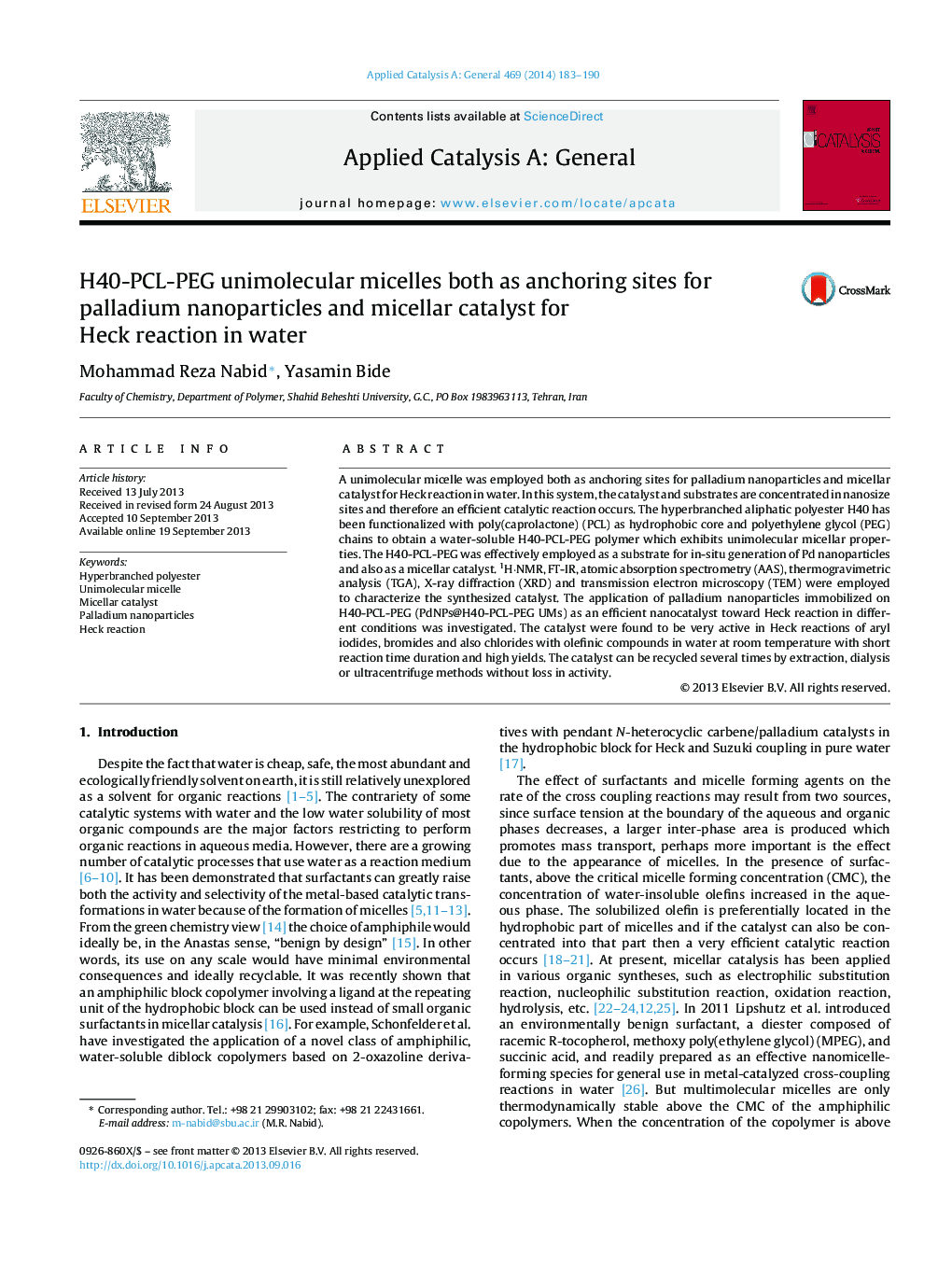| Article ID | Journal | Published Year | Pages | File Type |
|---|---|---|---|---|
| 40166 | Applied Catalysis A: General | 2014 | 8 Pages |
•H40-PCL-PEG both as anchoring sites for metal nanoparticles and micellar catalyst.•H40-PCL-PEG unimolecular micelles immobilized palladium nanoparticles.•The catalyst and substrates are concentrated in nanosize sites.•PdNPs@H40-PCL-PEG UMs as an efficient nanocatalyst toward Heck reaction in water.
A unimolecular micelle was employed both as anchoring sites for palladium nanoparticles and micellar catalyst for Heck reaction in water. In this system, the catalyst and substrates are concentrated in nanosize sites and therefore an efficient catalytic reaction occurs. The hyperbranched aliphatic polyester H40 has been functionalized with poly(caprolactone) (PCL) as hydrophobic core and polyethylene glycol (PEG) chains to obtain a water-soluble H40-PCL-PEG polymer which exhibits unimolecular micellar properties. The H40-PCL-PEG was effectively employed as a substrate for in-situ generation of Pd nanoparticles and also as a micellar catalyst. 1H·NMR, FT-IR, atomic absorption spectrometry (AAS), thermogravimetric analysis (TGA), X-ray diffraction (XRD) and transmission electron microscopy (TEM) were employed to characterize the synthesized catalyst. The application of palladium nanoparticles immobilized on H40-PCL-PEG (PdNPs@H40-PCL-PEG UMs) as an efficient nanocatalyst toward Heck reaction in different conditions was investigated. The catalyst were found to be very active in Heck reactions of aryl iodides, bromides and also chlorides with olefinic compounds in water at room temperature with short reaction time duration and high yields. The catalyst can be recycled several times by extraction, dialysis or ultracentrifuge methods without loss in activity.
Graphical abstractFigure optionsDownload full-size imageDownload high-quality image (174 K)Download as PowerPoint slide
